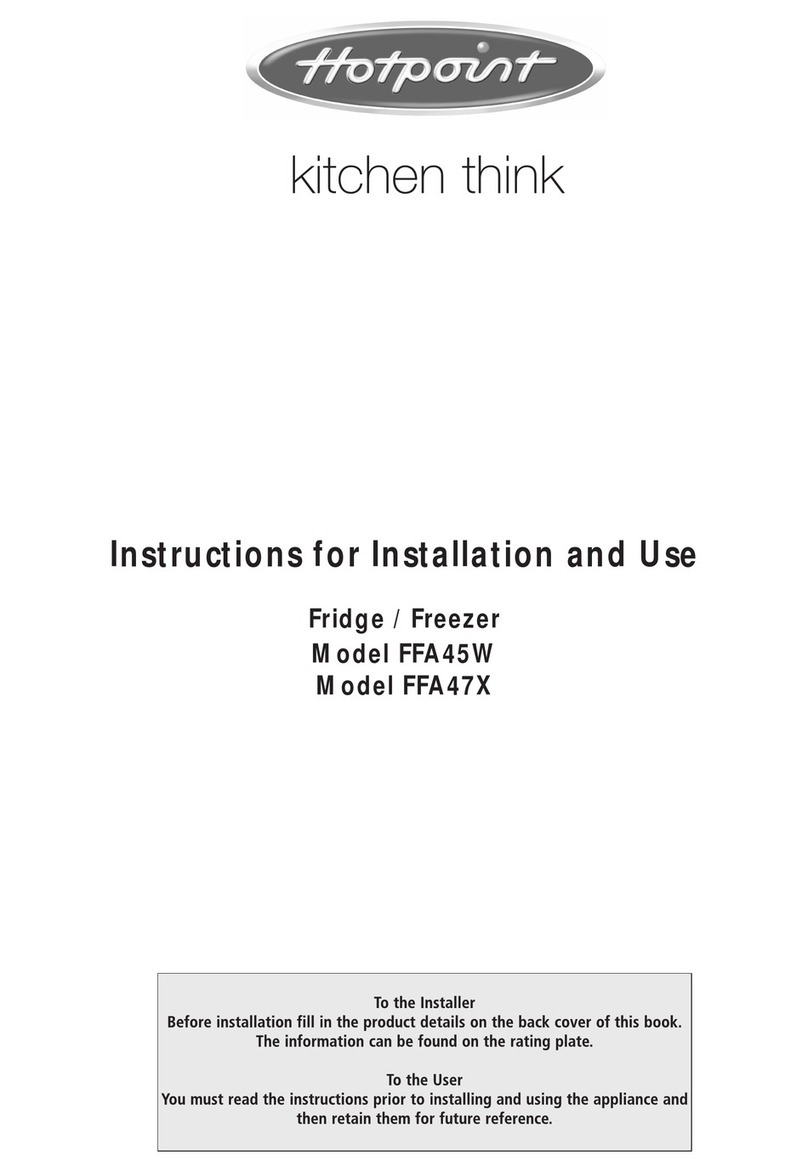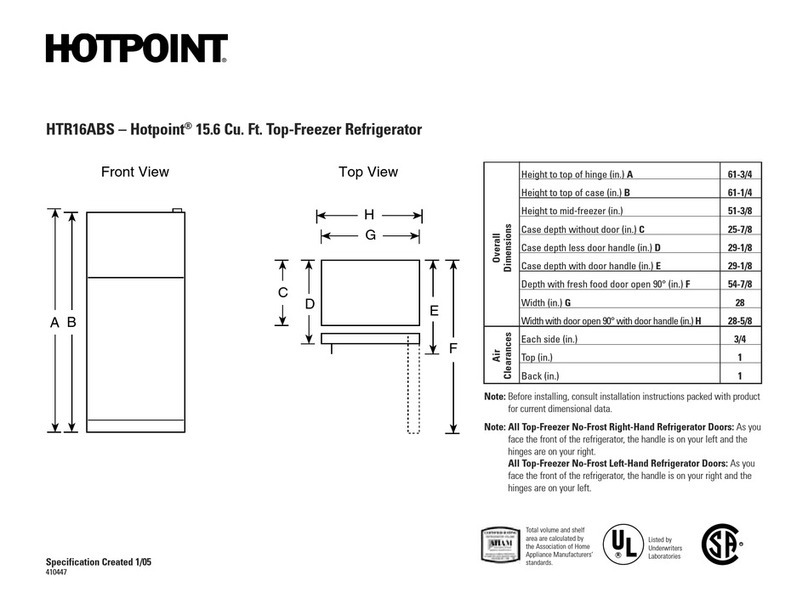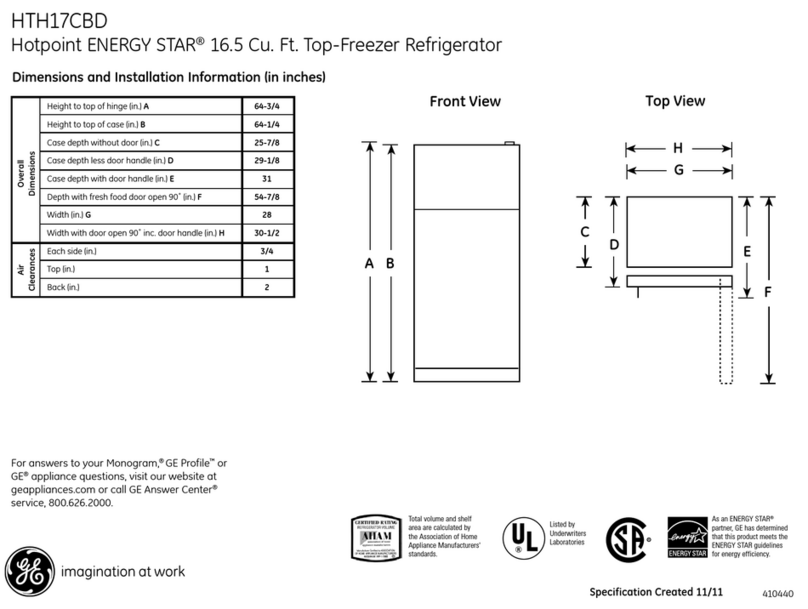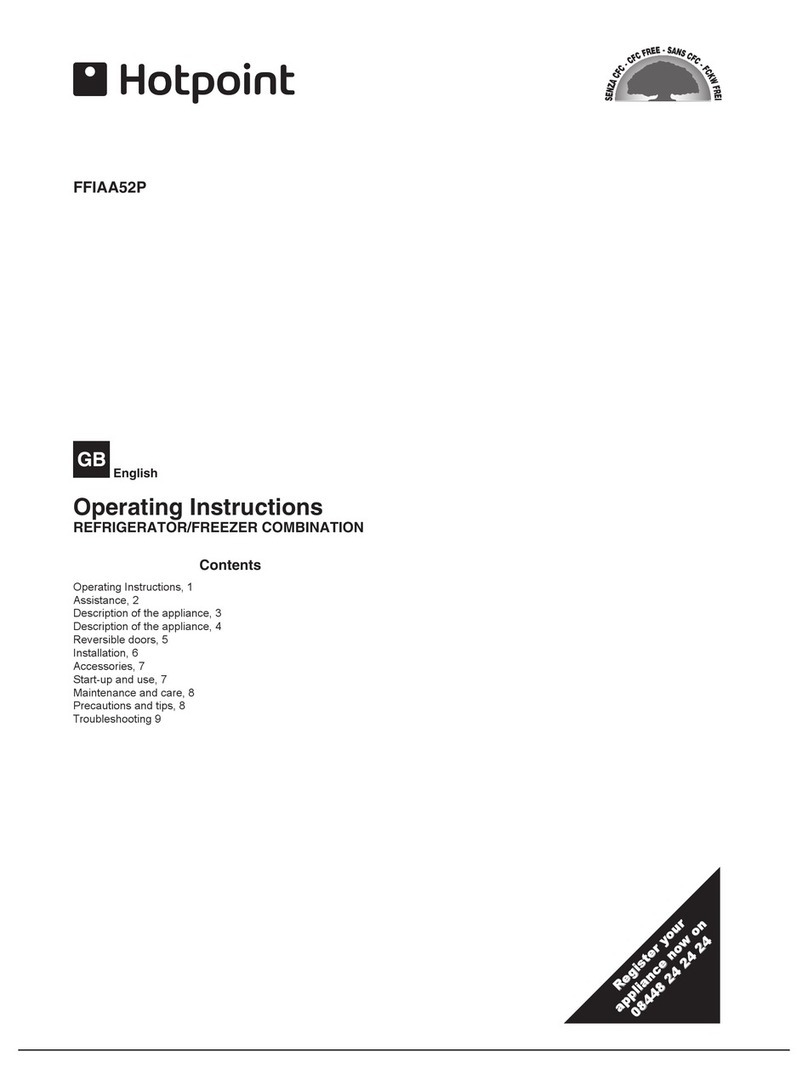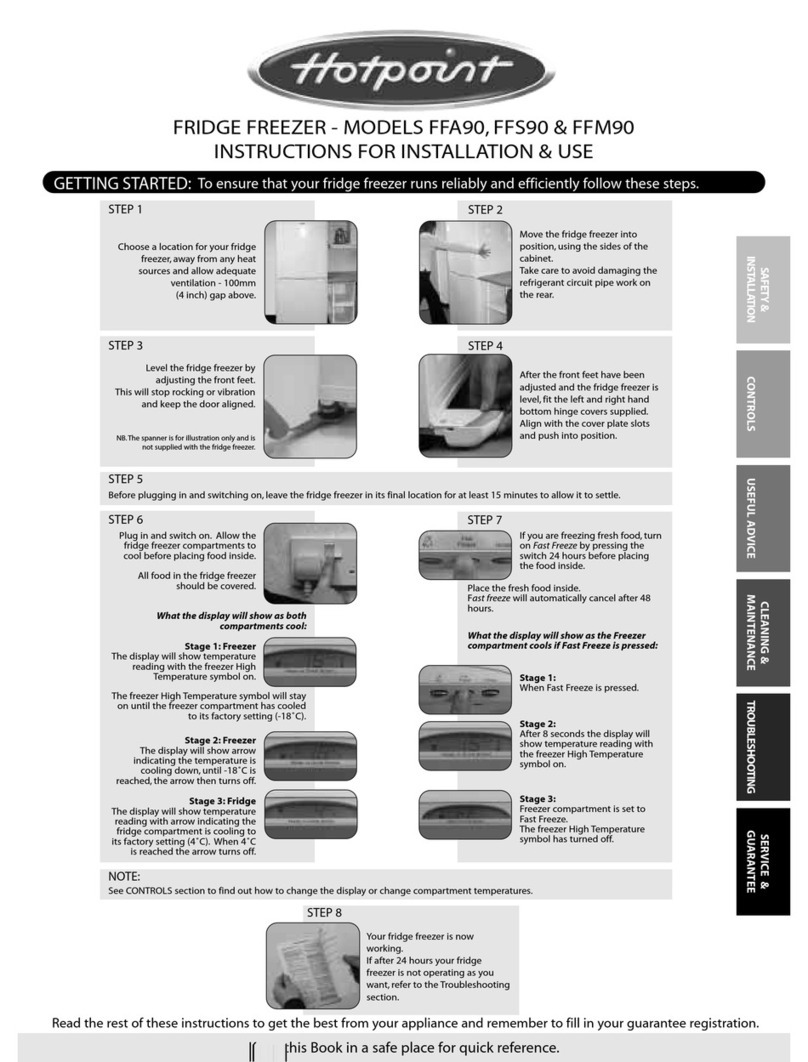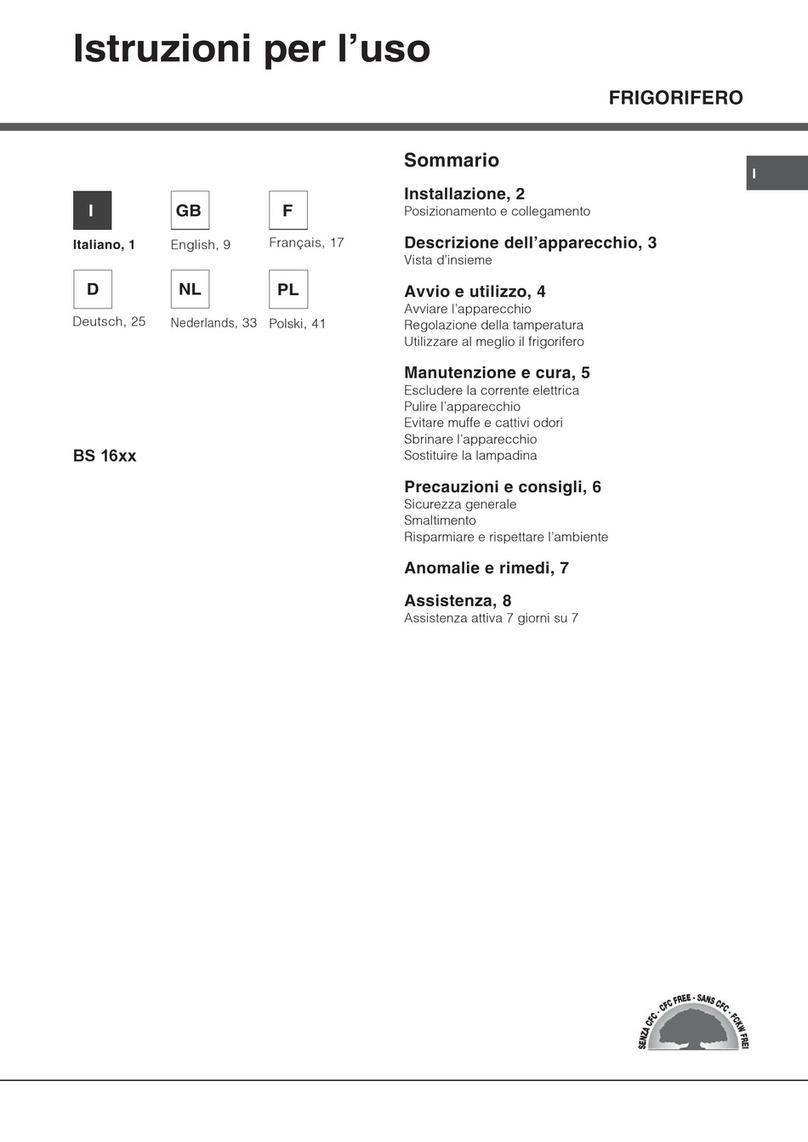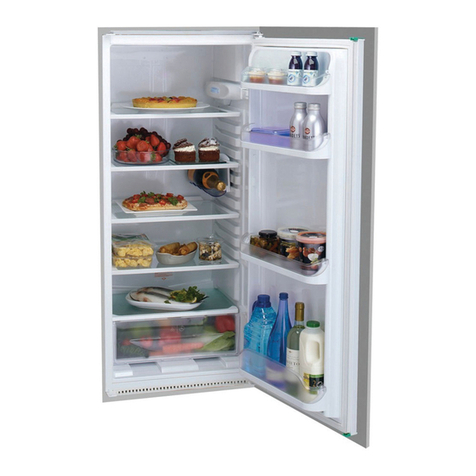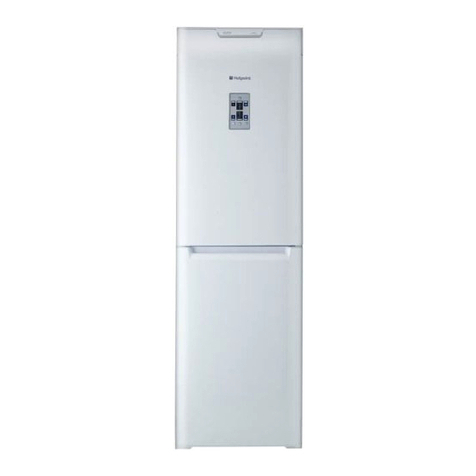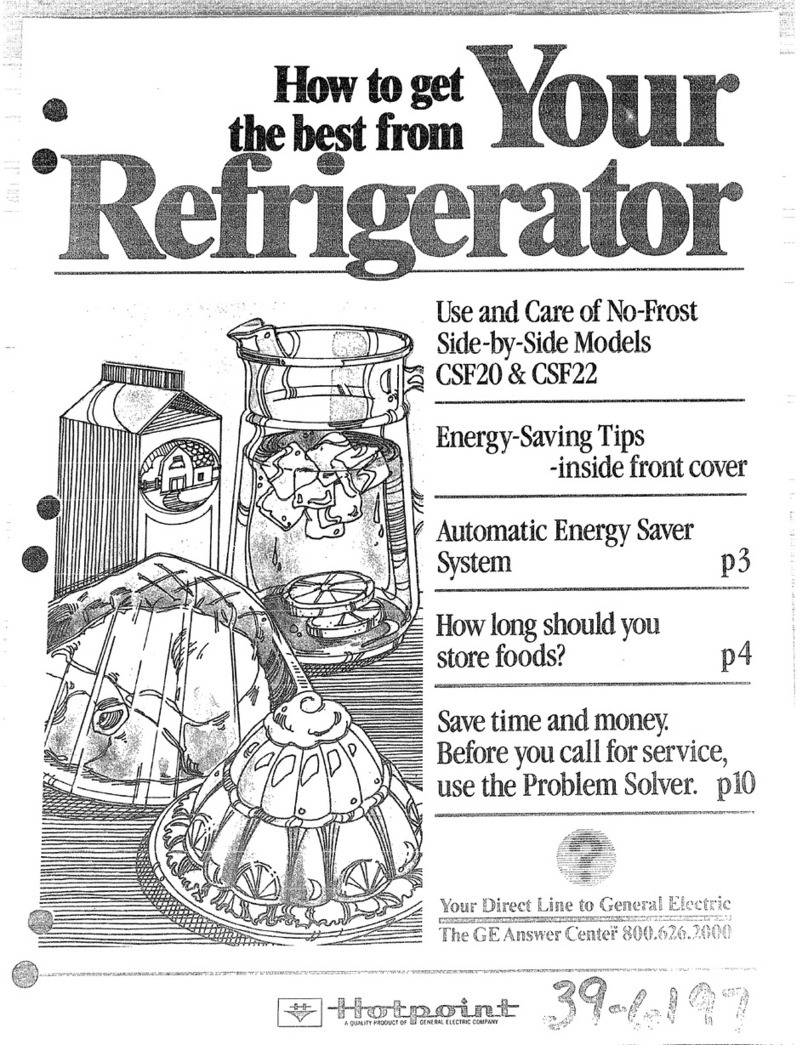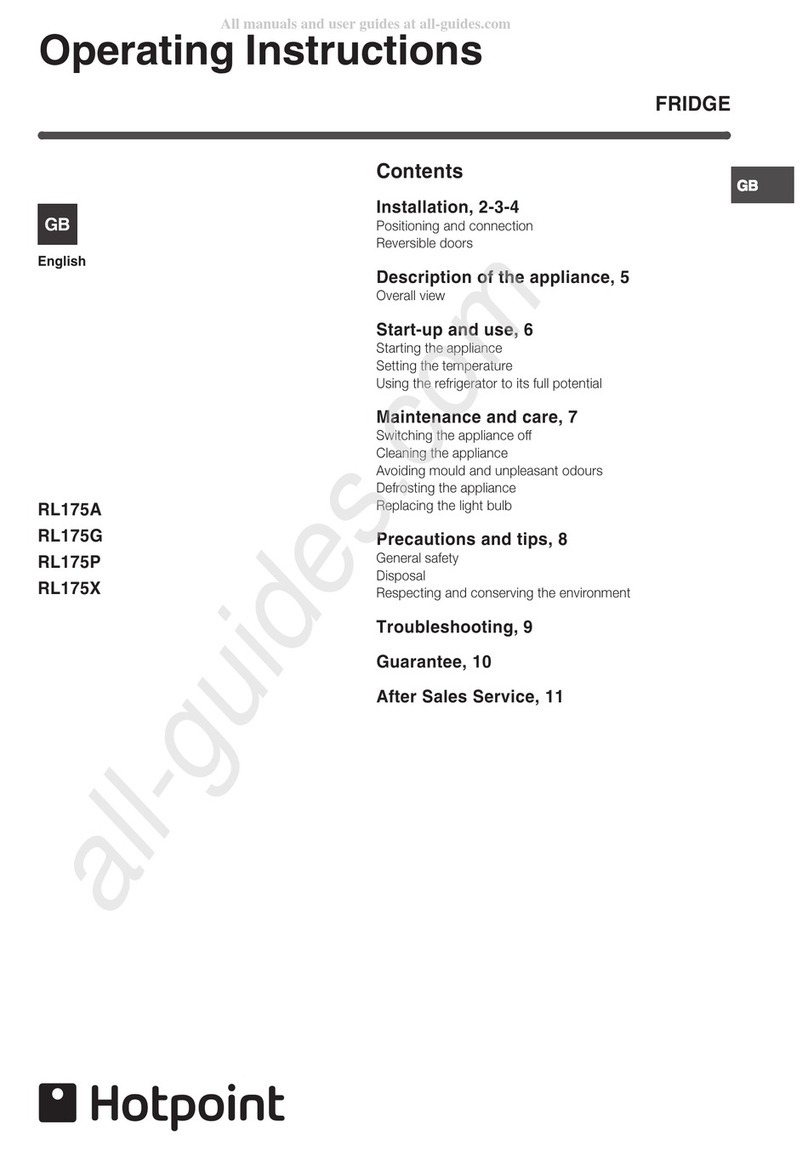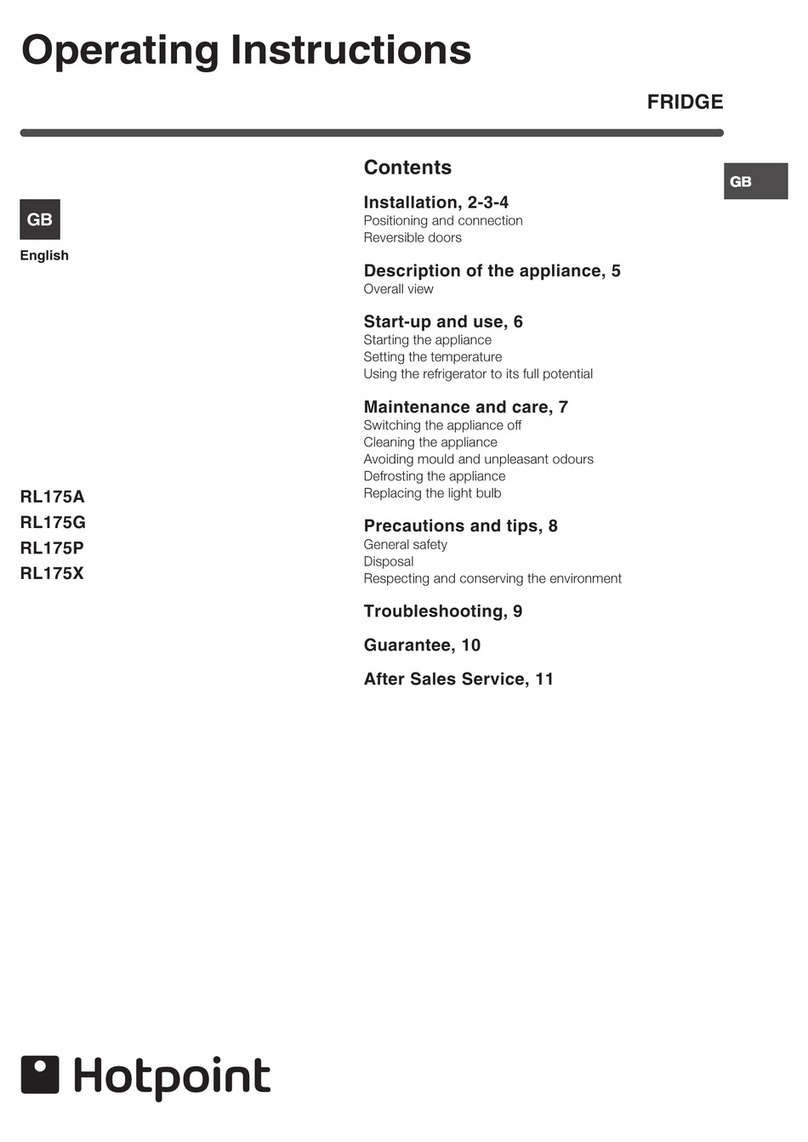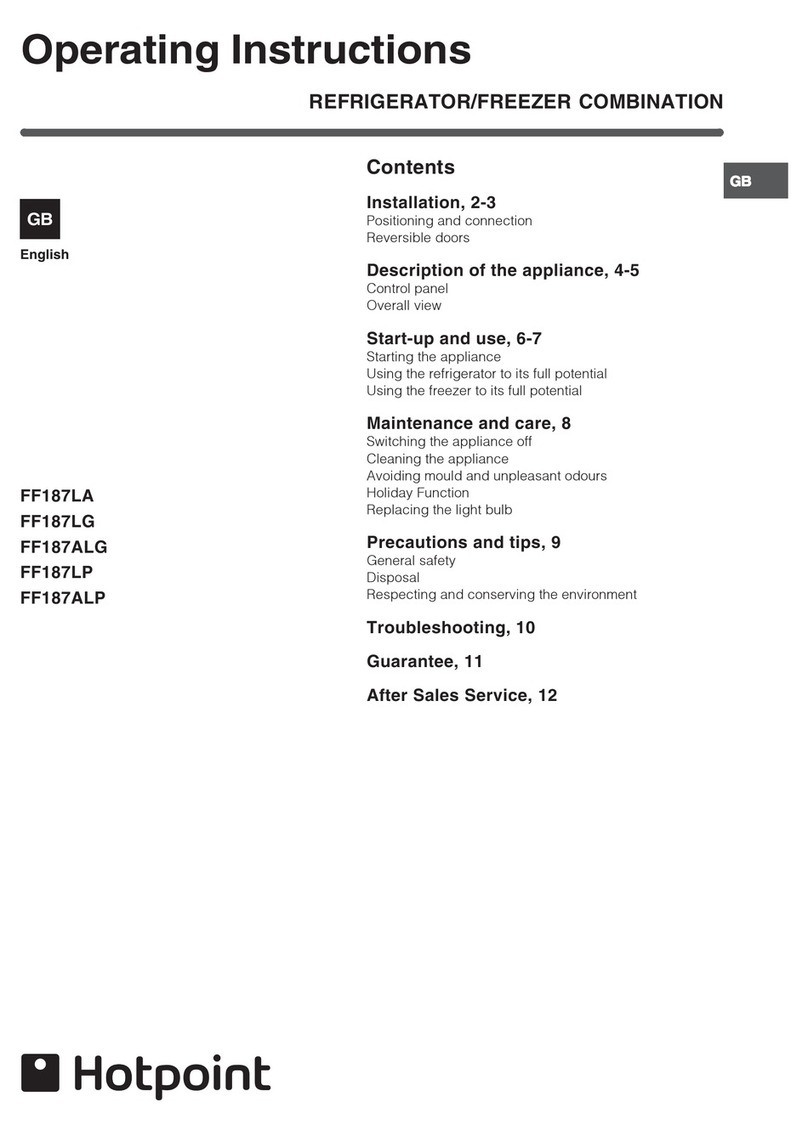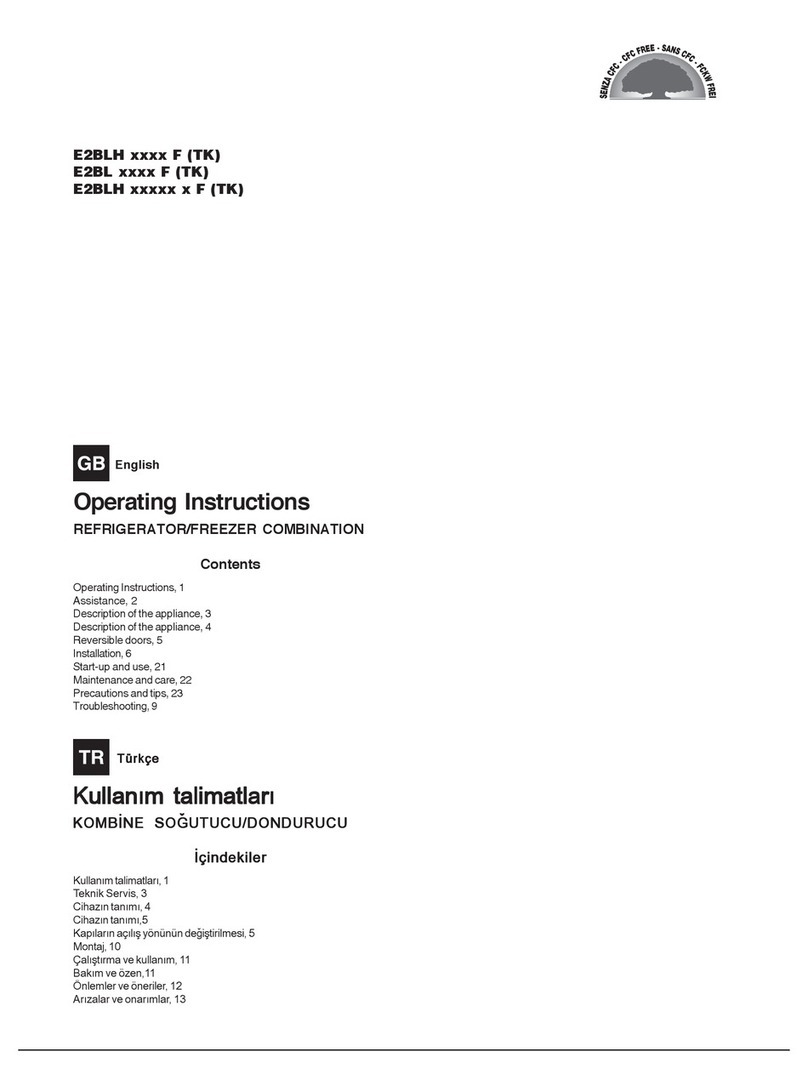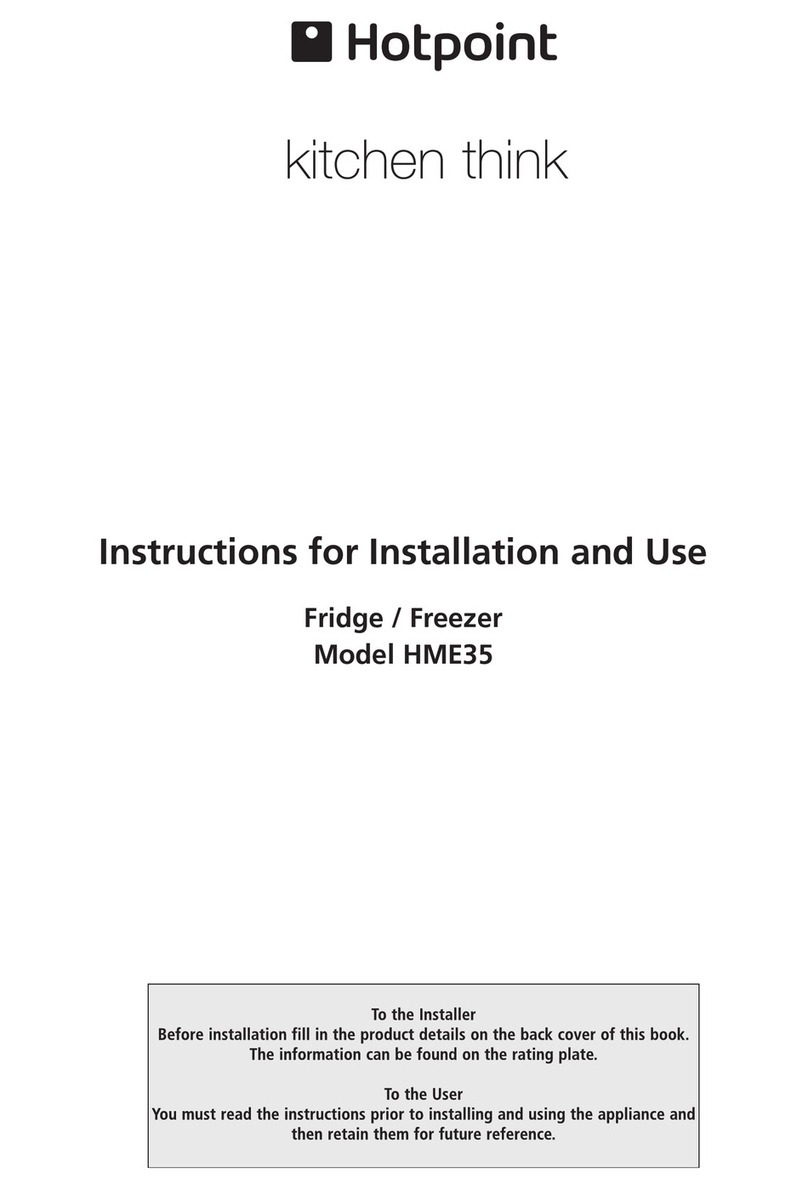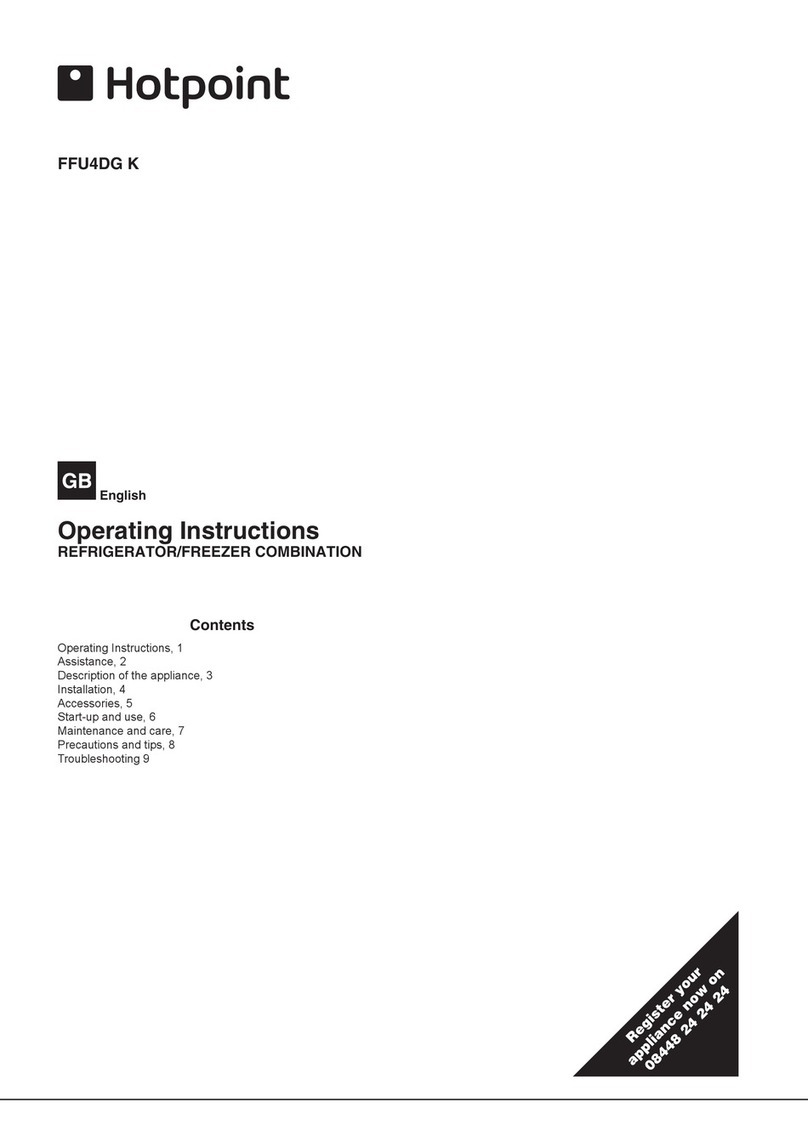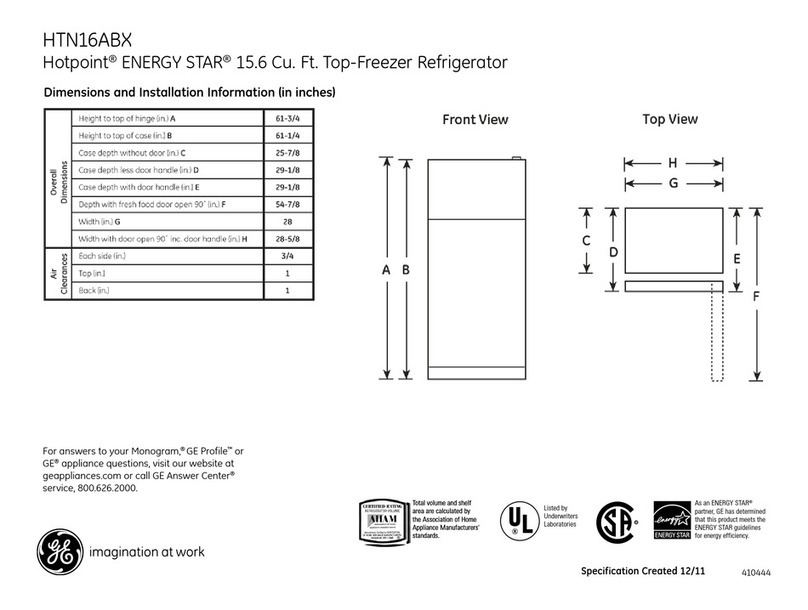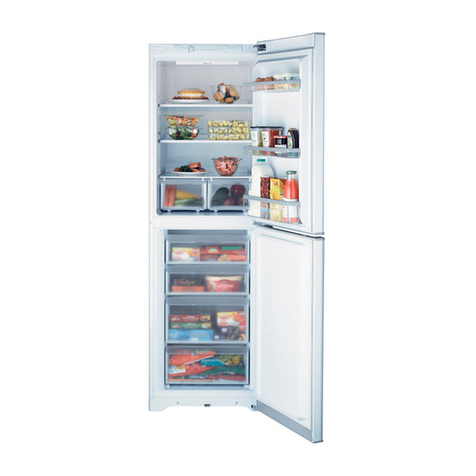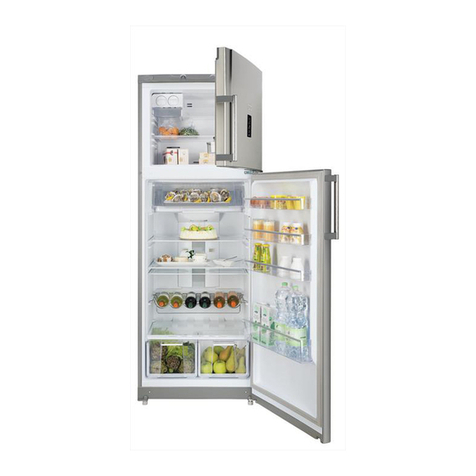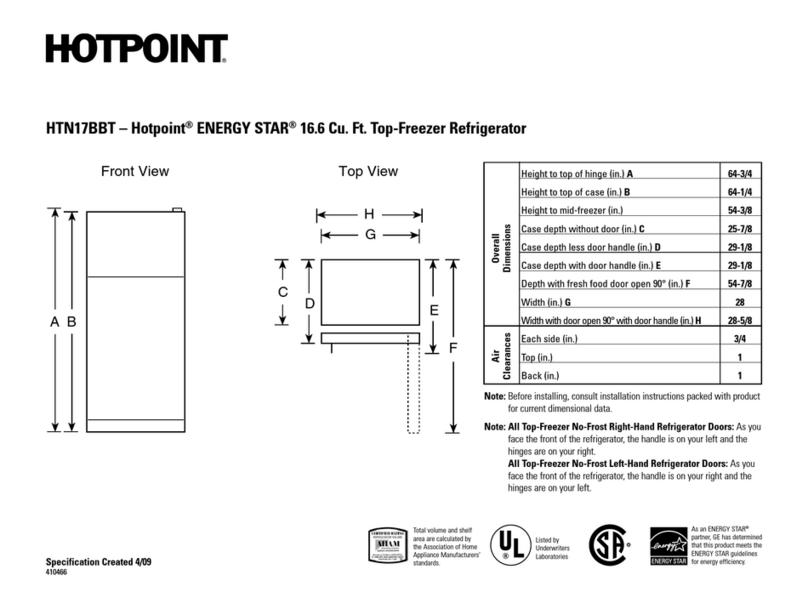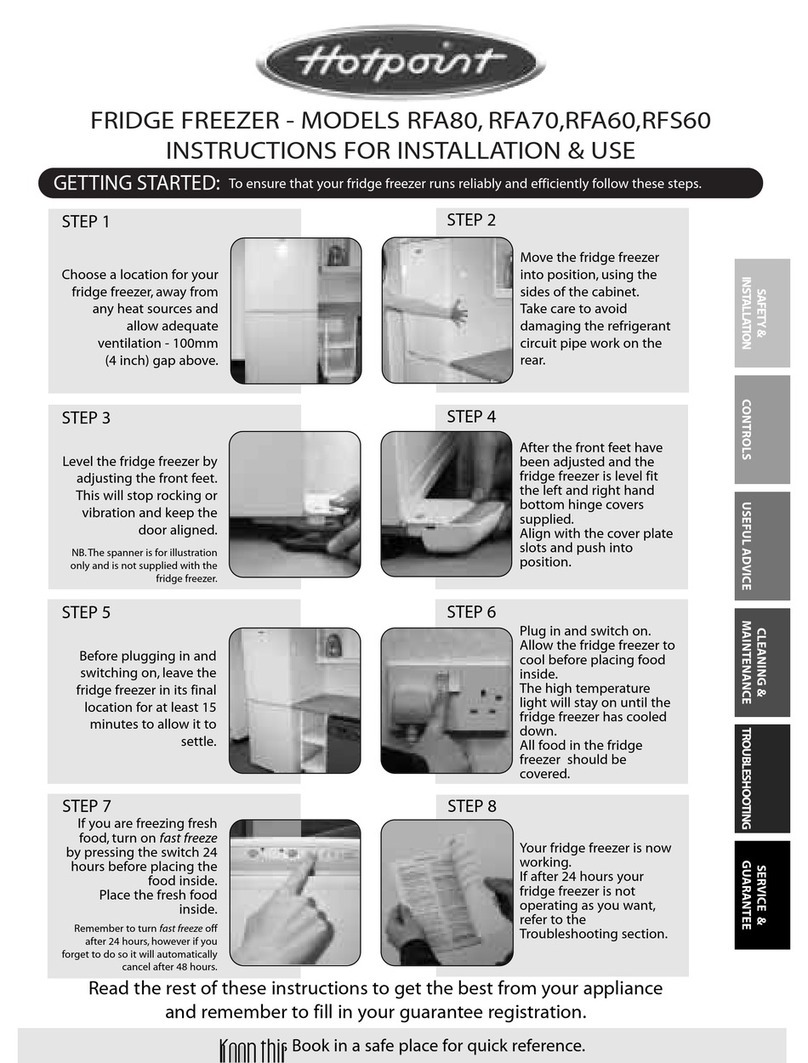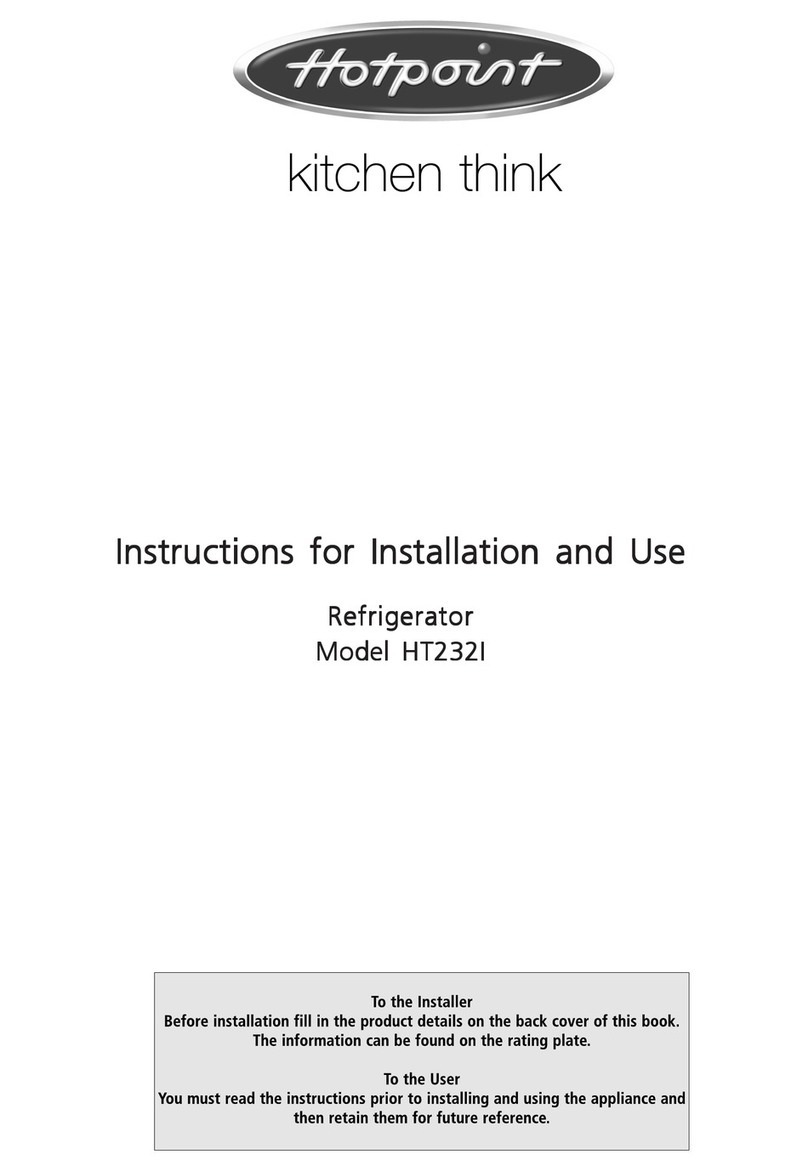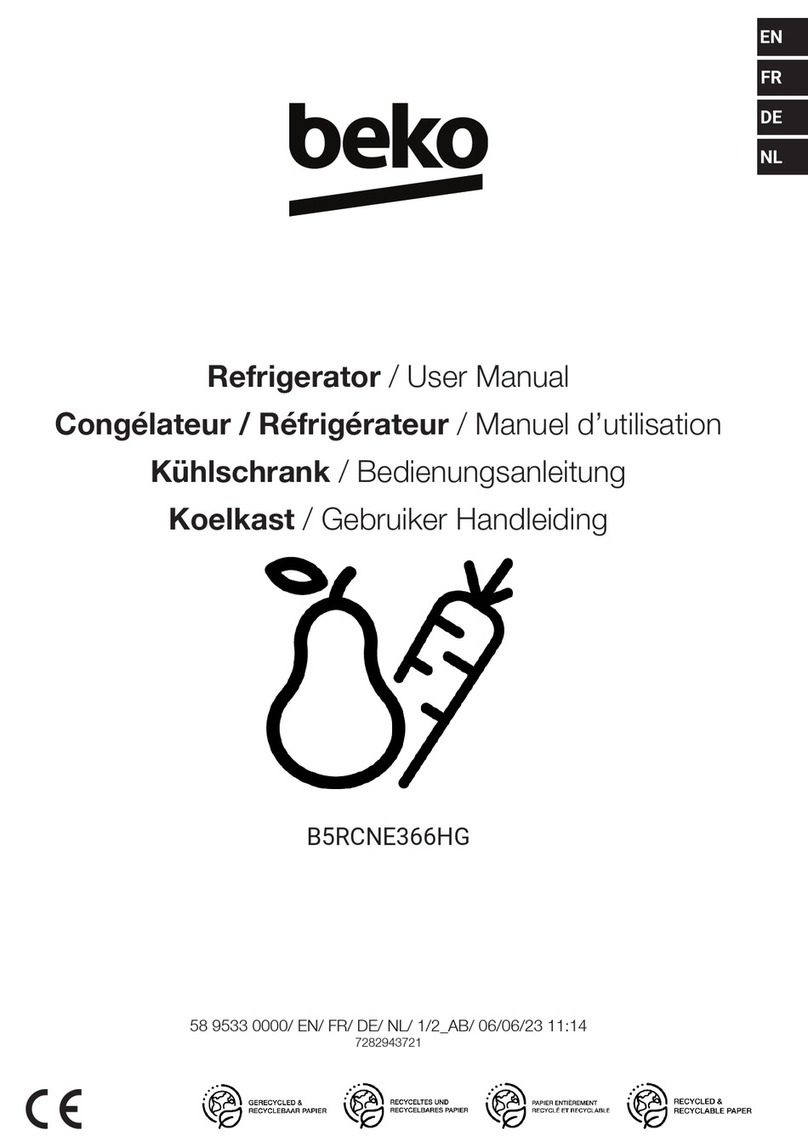
Food Storage Suggestions
Suggested storage times
for meat and poultry*
IN IN
... ...
Eatingquality drops REFRIGERATOR FREEZER
aftertimeshown AT
35° t%T400F.
FreshMeats DAYS
Roasts (Beef &Lamb). 3t05
Roasts (Pork&Veal). 3t05
Steaks (Beef). 3t05
Chops (Lamb)... 3t05
Chops (Pork).. 3t05
Ground &Stew Meats lto2
Variety Meats . . . . . . lto2
Sausage (Pork). lto2
ProcessedMeats
Bacon . . . . . . . 7
Frankfurters. 7
Ham (Whole). 7
Ham (Half) 3t05
Ham (Slices). 3
Luncheon Meats 3t05
Sausage (Smoked) 7
Sausage (Dry&Semi-Dry) 14 to 21
CookedMeats
Cooked Meats and
Meat Dishes 3t04
Gravy &Meat Broth lto2
FreshPoultry
Chicken &Turkey (Whole). lto2
Chicken (Pieces) lto2
Turkey (Pieces) lto2
Duck &Goose (Whole) 1to 2
Giblets. lto2
CookedPoultry
pieces(Covered with Broth) 1to 2
Pieces (Not Covered) 3to 4
Cooked Poultry Dishes. 3t04
Fried Chicken. 3t04
OOF.
MONTHS
6to 12
4t08
6to 12
6t09
3t04
3t04
3t04
lto2
1
x
lto2
lto2
lto2
Freezing
not recom-
mended.
2t03
2t03
12
9
:
3
6
1
4t06
4
(Otherthanformeats&poultry) FREEZER
Most fruits and vegetables. 8-12 months
Lean fish. 6-8 months
Fatty fish, rolls and breads,
soups, stew, casseroles ....2-3 months
Cakes, pies, sandwiches,
Ieft-ove[s (cooked),
Ice cream (originalcarton). .1 monthmax
Newtechniquesareconstantlybeingdeveloped.
ConsultthecollegeorCountyExtensionServiceor
yourlocalutilityCompanyforthelatestinformation
onfreezingandstoringfoods.
*U.S. Department of Agriculture
Meats, fish and poultry purchased
from the store vary in quality and
age; consequently, safe storage
time in your refrigerator will vary.
To store unfrozen meats, fish and
poultry
.Always remove store wrappings.
●Rewrap in foil, film or wax paper
and refrigerate immediately.
To store cheese, wrap well with wax
paper or aluminum foil, or put in a
plastic bag.
●Carefully wrap to expel air and
help prevent mold.
●Store pre-packaged cheese in its
own wrapping if you wish.
To store vegetables, use the
vegetable drawers—they’ve been
designed to presetve the natural
moisture and freshness of produce.
●Crispness can be maintained by
covering vegetables with amoist
towel.
●As afurther aid to freshness,
pre-packaged vegetables can be
stored in their original wrapping.
Note: The Sealed & Fresh drawer
(on models so equipped) makes it
unnecessary to wrap certain foods
which it has been designed to pre
serve. This drawer is described
on page Z
Tostore ice cream-Fine-quality
ice cream, with high cream
content, will normally require
slightly lower temperatures than
more “airy” already-packaged
brands with low cream content.
. It will be necessary to experiment
to determine the freezer compart-
ment location and temperature con-
trol setting to keep your ice cream
at the right serving temperature.
. The rear of the freezer compart-
ment is siightlycolderthan the front.
Tips on freezing foods
There are three essential require-
ments for efficient home freezing.
1. Initial quality. Freeze only
top-quality foods. Freezing retains
quality and flavor; it cannot improve
quality.
2. Speed. The quicker fruits and
vegetables are frozen after picking,
the better the frozen product will
be. You’ll save time, too, because
less culling and sorting will be
necessary.
3. Proper packaging. Use food
wraps designed especially for
freezing.
To freeze meat, fish and poultry, e
wrap well in freezer-weight foil (or
other heavy-duty wrapping material)
forming it carefully to the shape of
the contents. This expels air. Fold
and crimp ends of the package to
provide agood, lasting seal.
Don’t refreeze meat that has com-
pletely thawed; meat, whether raw
or cooked, can be frozen success-
fully only once.
Limit freezing of fresh (unfrozen)
meats or seafoods to number of
pounds at atime as follows:
.CSX20 . . . . . . . . . . . . . . ..2 Opounds
CSX22................21pounds
Organize your food storage
for convenience.
●Store all like things together. This
not only saves time, but electricity—
because you can find foods faster.
.Place the oldest items up front so
they can be used up promptly.
●Use the handy shelves on the door @
for most frequently used sauces and ‘
condiments.
●Use the meat drawer, if your model
has one, for meats you do not freeze.
To save money in energy
and food costs.
●Place most perishable items such
as milk, cream or cottage cheese
toward the rear of the top shelf as
they will stay coldest in this part
of the fresh food compartment.
●Cover moist foods with tight lids,
plastic film or foil.
.Leaf vegetables and fruits placed
in storage drawers will last longer
when stored in closed plastic con-
tainers or wrapped in plastic film.
●Do not overload your fresh food
or freezer compartment with alot
of warm food at once.
●Open the door the fewest times
possible to save electrical energy
●When going out of town for sev-
eral days, leave as few perishables
as possible in the refrigerator. If
your refrigerator has an icemaker, 40
move the icemaker manual switch
to “OFF’ and shut off water to
the refrigerator.
6

